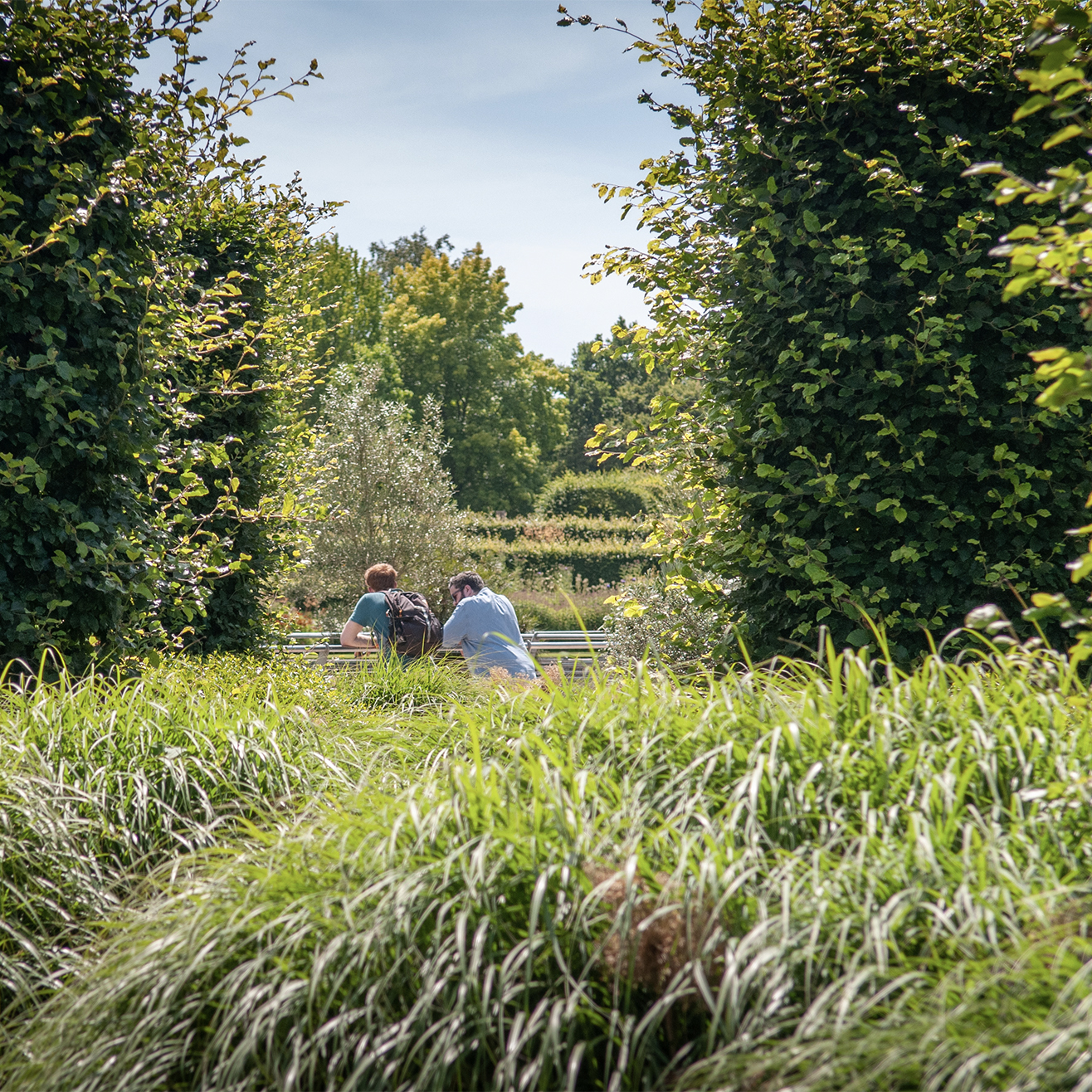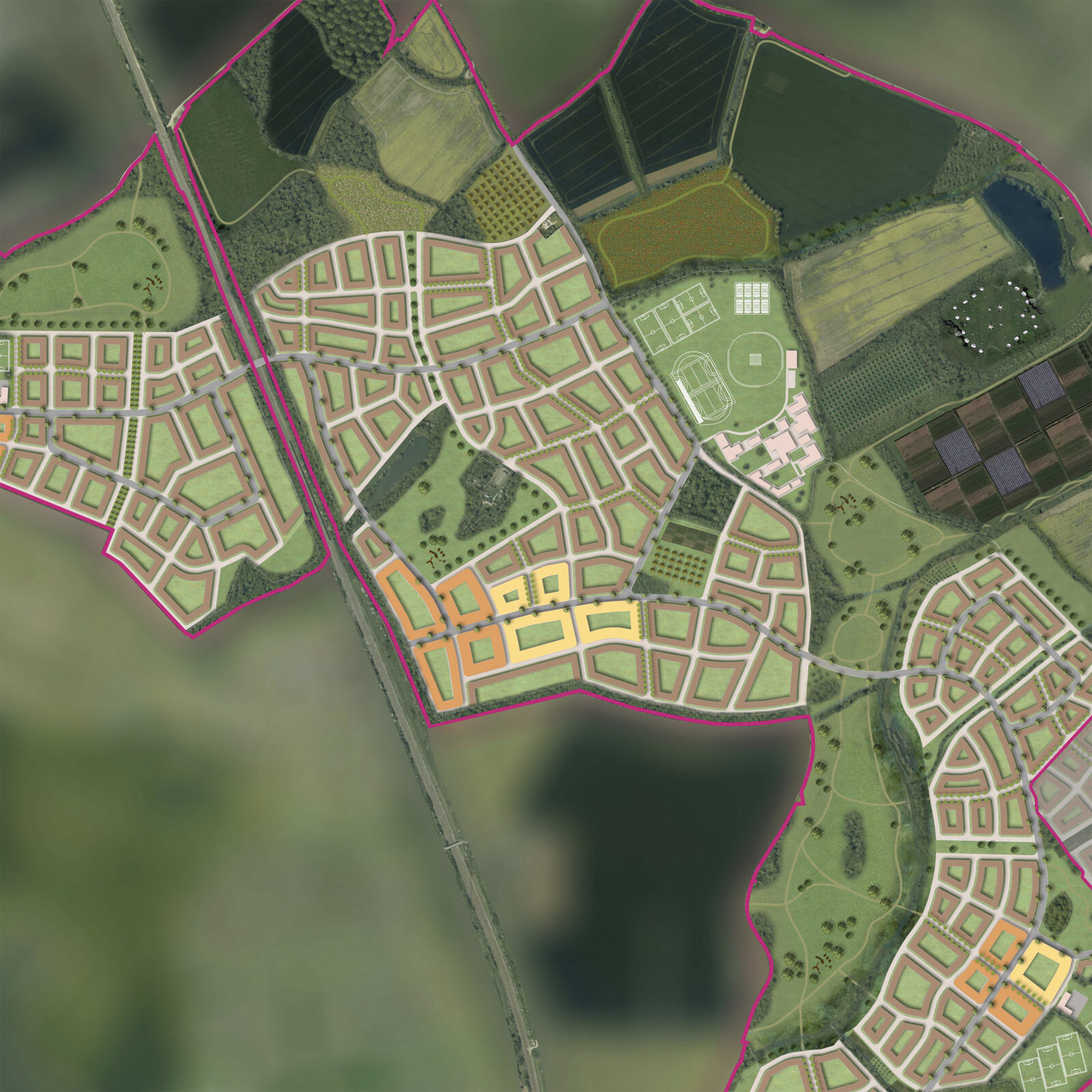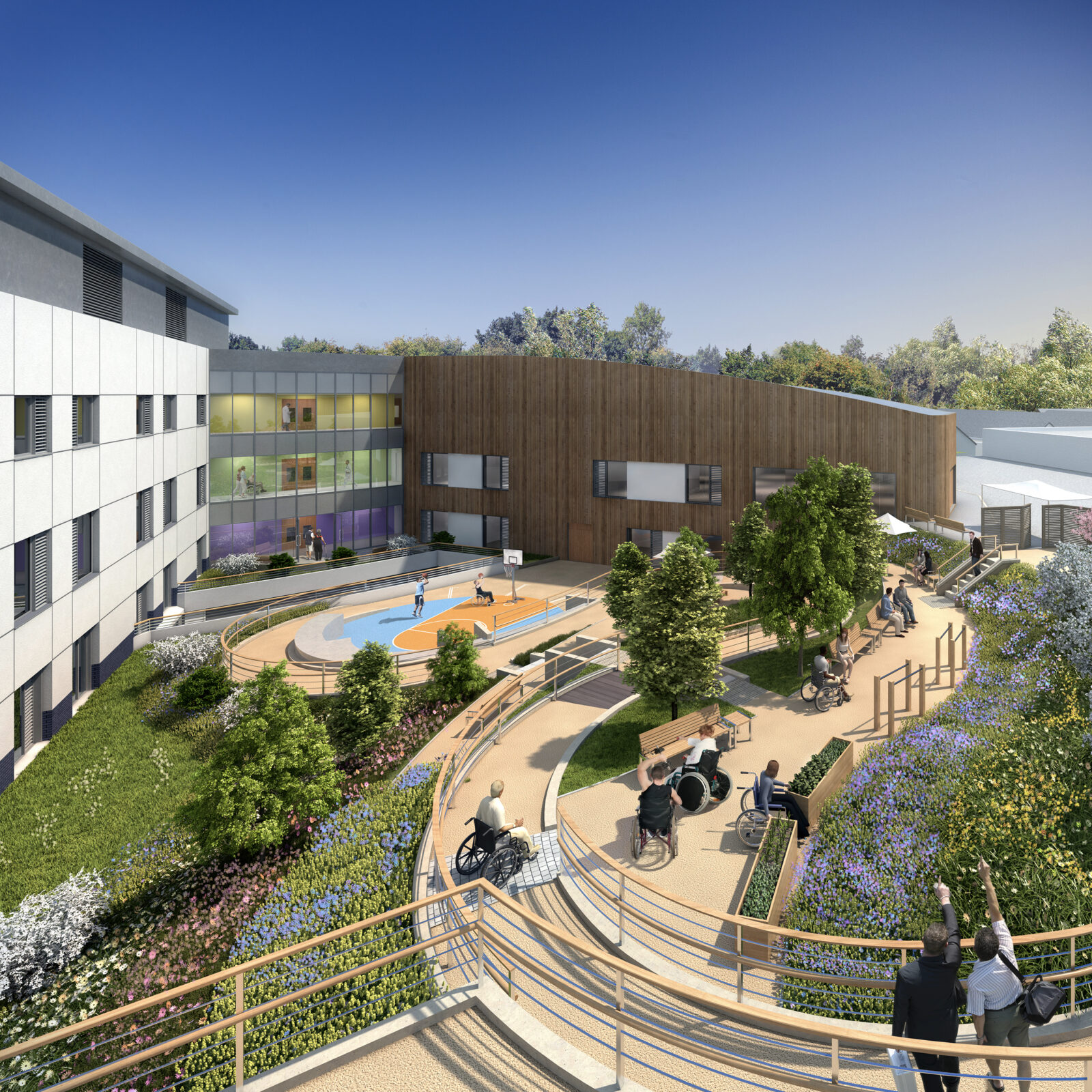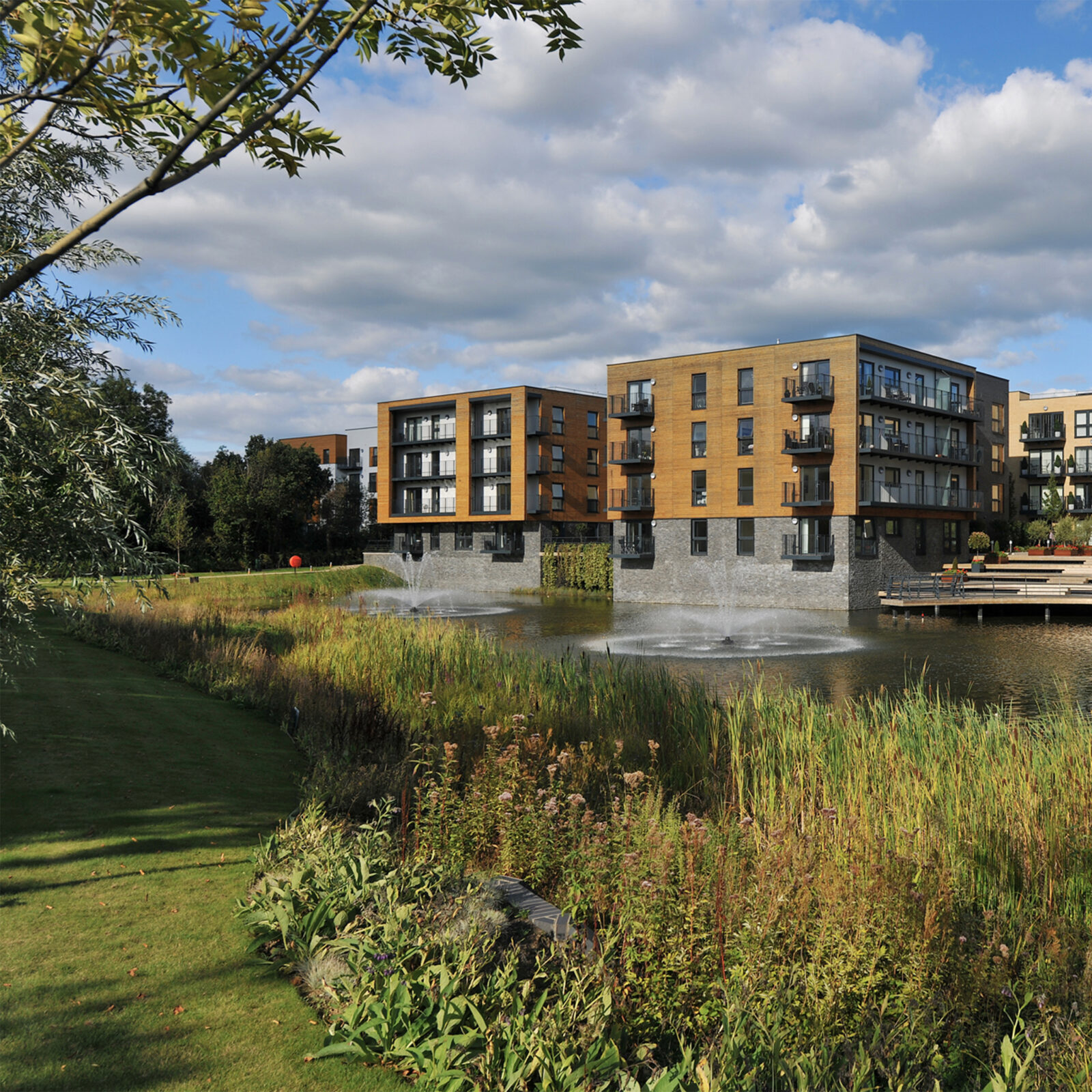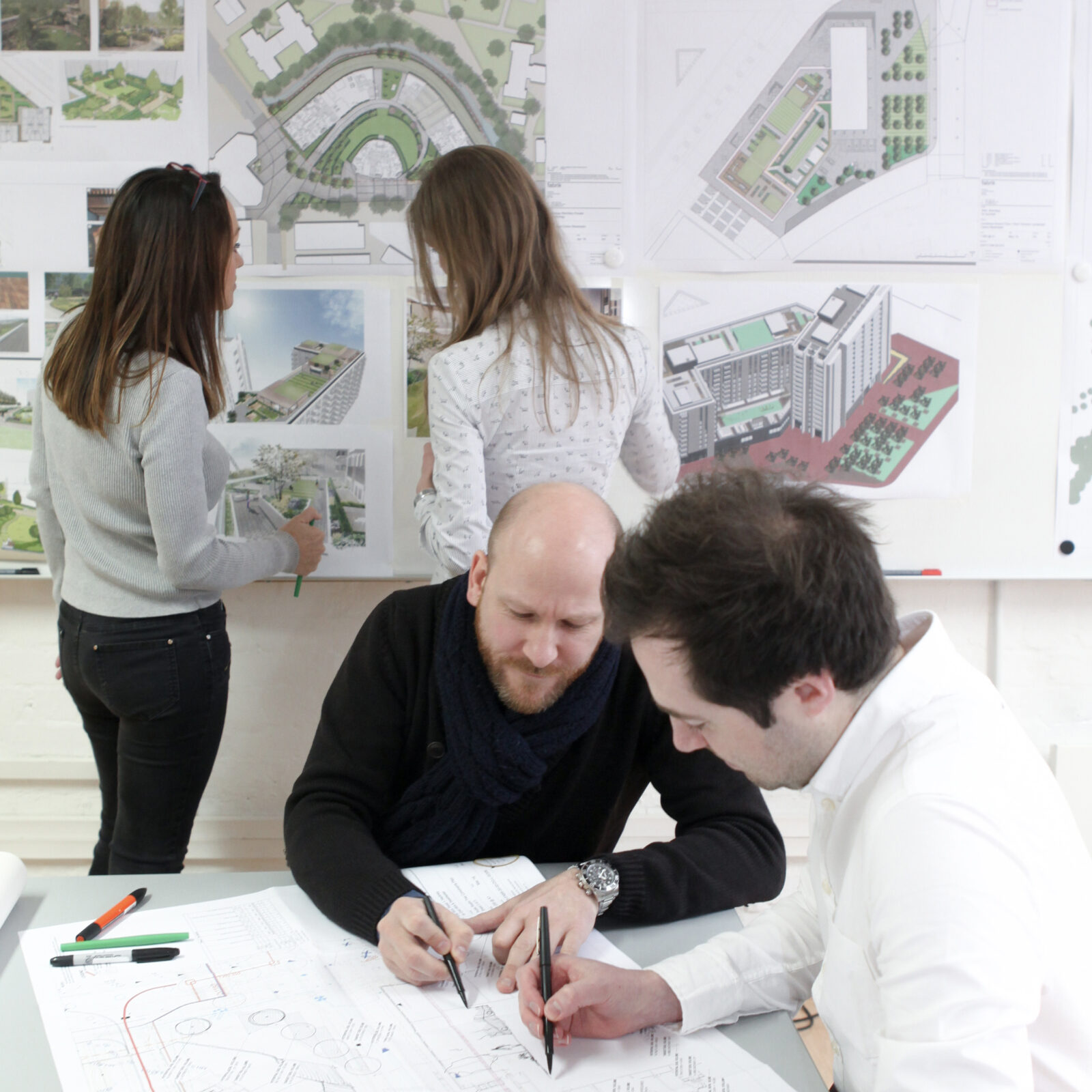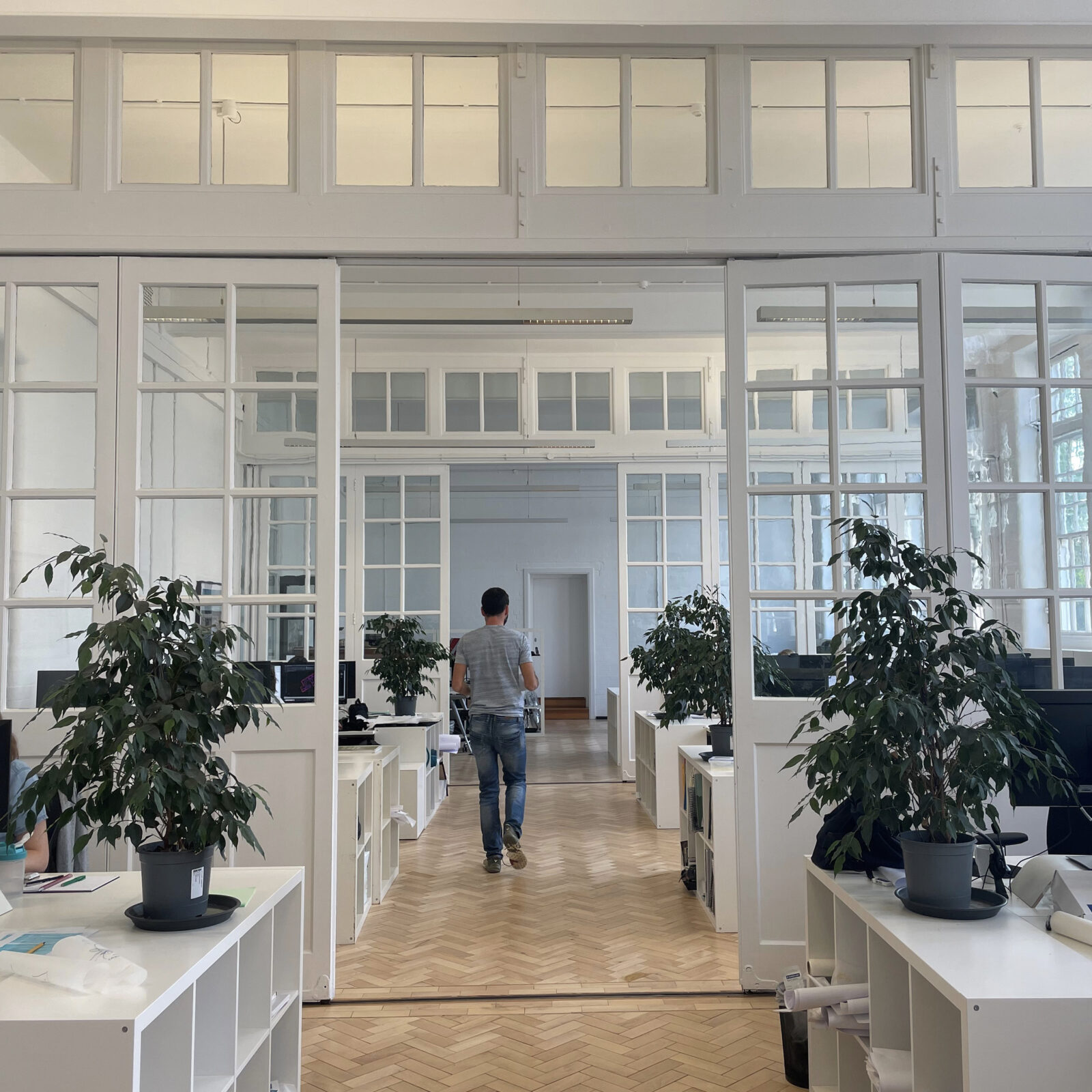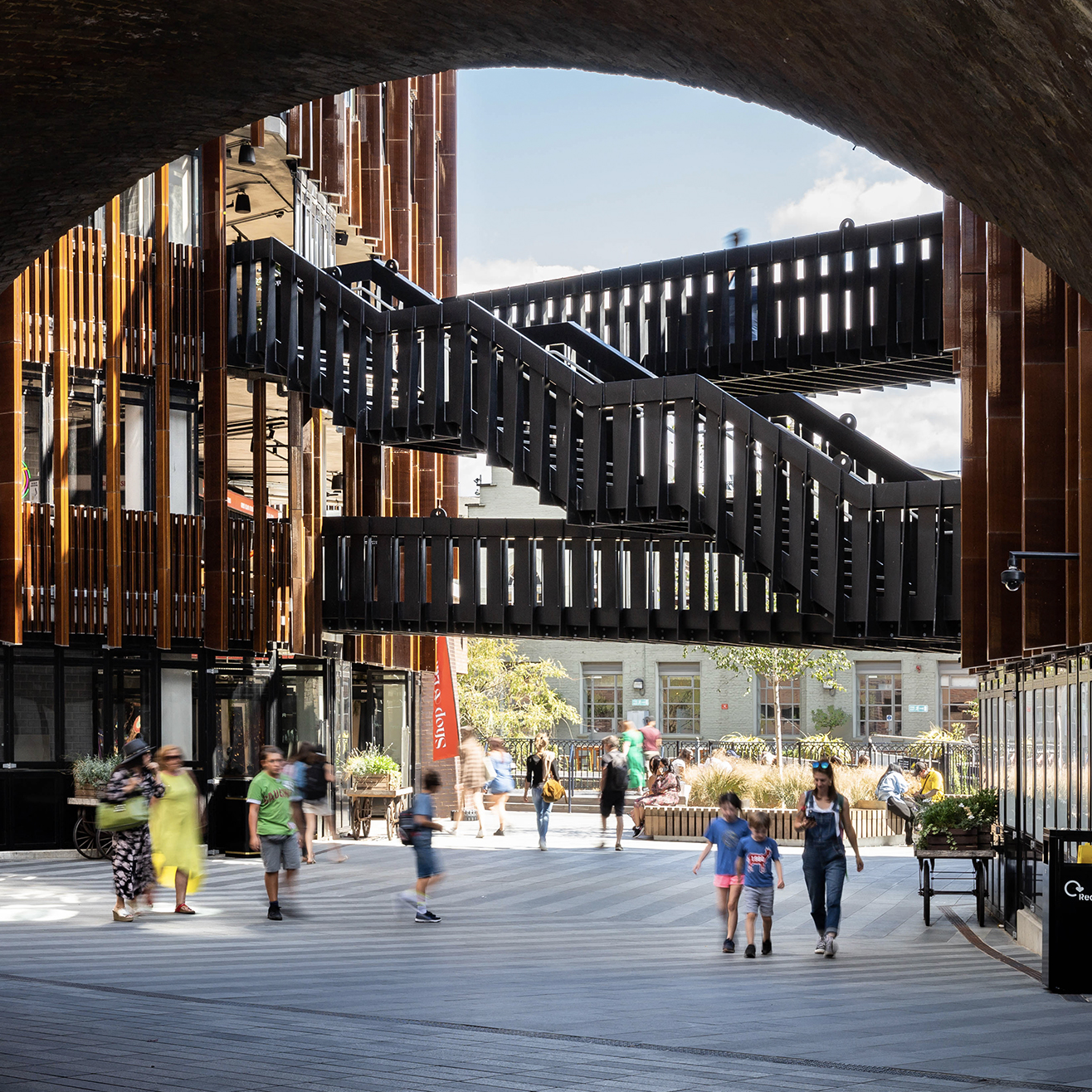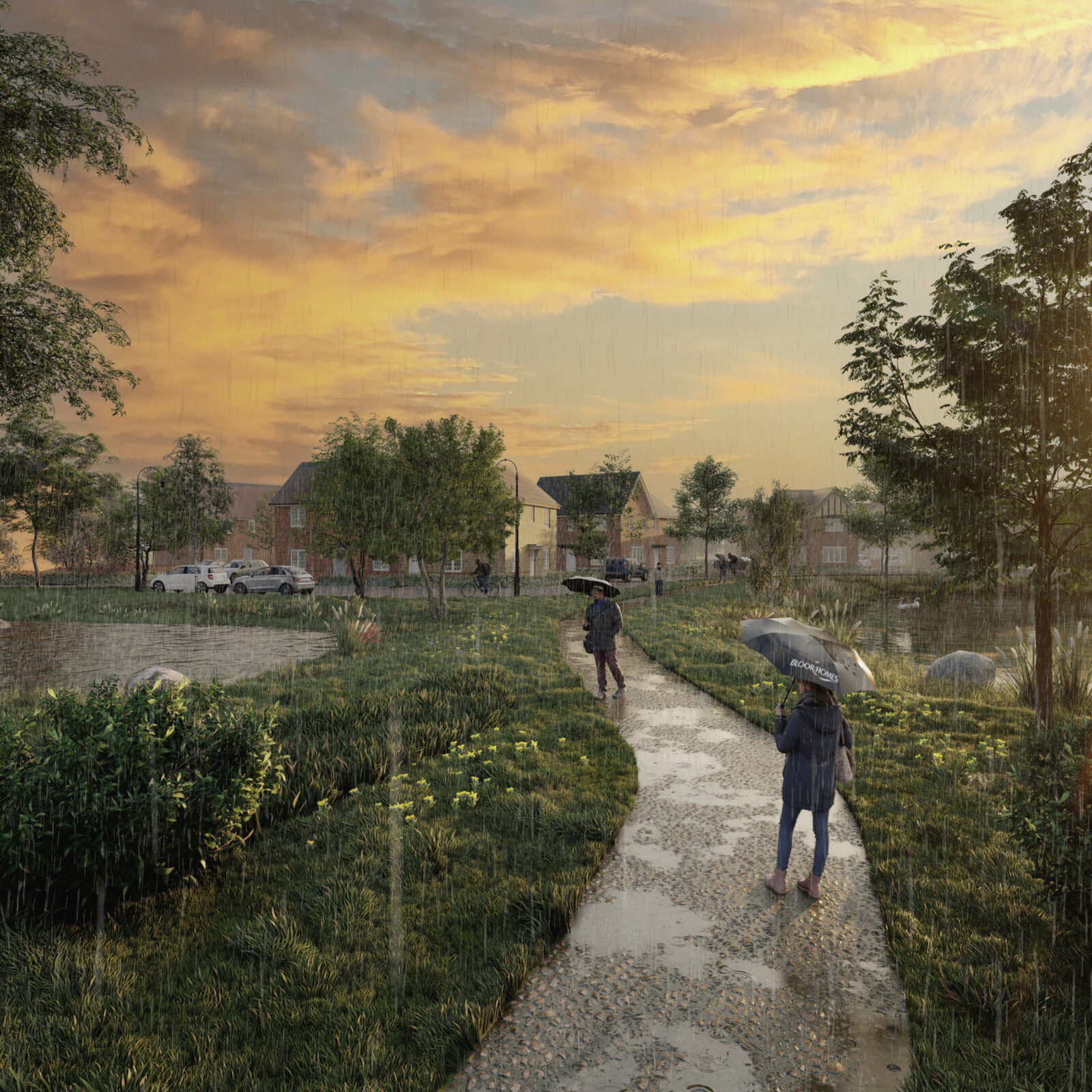Have you seen Create Streets‘ interesting read, ‘Move Free’?
If offers a great insight into movement, asking the important question of what types of movement patterns are associated with more prosperity, successful high streets, happiness, freedom of choice and with building more homes.
In the development industry we are seeing wider streets with less tree planting and bigger junctions, born of technical highways standards, often relating to the needs of waste collection vehicles. With car parking standards added into the mix, our streets are squeezed further still, impeding placemaking and creating ever more constrained and car-dominant spaces.
Attempts to reduce car dominance can often be met with public concern, strong opinions on function or viability concerns from clients. A recent example of this is at one of our garden village schemes, where an unusual local authority restriction in on-plot parking at the planning stage is now threatening the viability of house sales. When the only way to get about is by car, then it is not unreasonable that people buying new homes demand multiple parking spaces. However, the result is that places cannot easily be created at densities above 30 dph, which then not only makes it difficult to deliver viable low-carbon alternatives to the private car, but also to provide the critical mass to support the services and amenities that communities quite rightly desire, not to mention making addressing the housing crisis even more of a challenge than it is already.
How can we balance this tension? Perhaps, as Create Streets suggest, we should focus on creating more opportunities for people to take the sustainable option and move the debate from cars to choice, alongside gently pushing up density. As the report highlights, historic Victorian and early twentieth century streets are typically at densities closer to 50-75 dph, and are highly sought after and valuable, opposed to the image of high rise towers that the mention of higher densities often conjures up. Similarly, we need a joined up conversation between highway departments and those creating design policies to determine the absolute fixes and where there can be some flex, resulting in a more flexible framework for the benefit of placemaking.
Check out the full article here.
